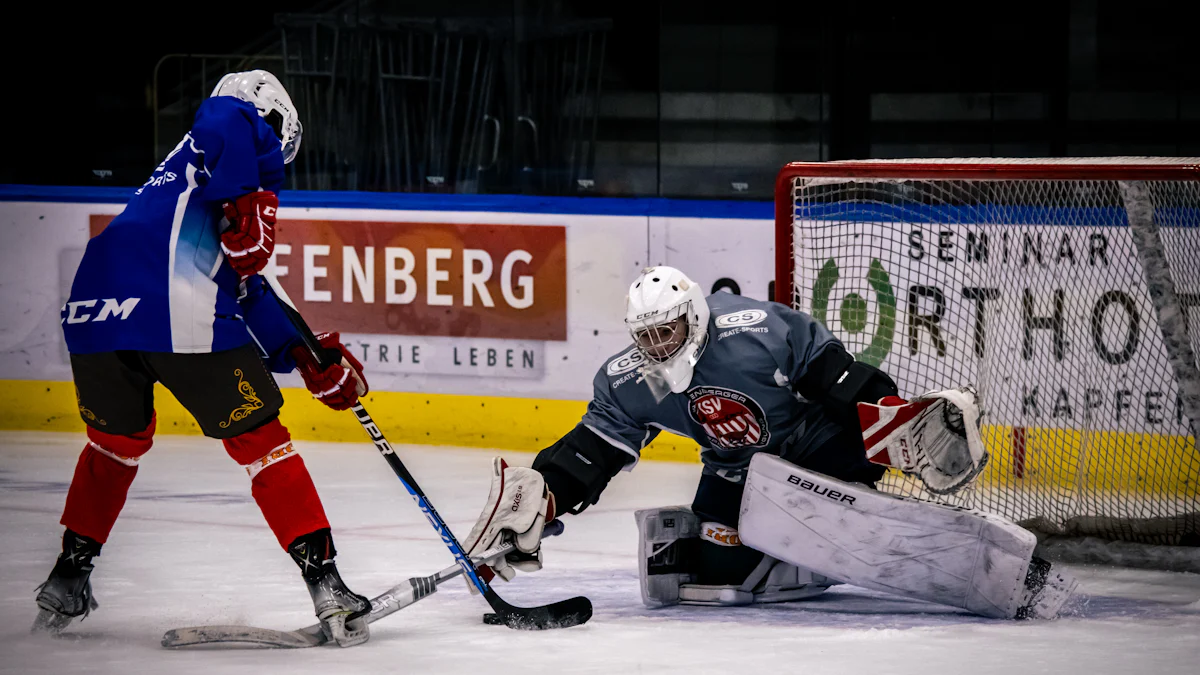
Choosing the right hockey socks can significantly impact your performance on the ice. Hockey socks, ranging from ankle to thigh, cover protective gear and enhance comfort. A variety of options exist in the market, including nylon hockey socks, which offer durability and flexibility. Comparative analysis helps you understand which type suits your needs best. Experiments with different materials, like lightweight fabrics, show varying benefits. Some socks even feature cut-resistance, providing extra protection during gameplay. Understanding these differences ensures you make an informed choice.
Types of Hockey Socks

Traditional Knit Socks
Features and Benefits
Traditional knit socks offer a classic look and feel. These socks use a rib-knit design that stretches to fit over shin guards. The material provides warmth and comfort during play. Many players appreciate the durability of knit socks, which withstand frequent use.
Customization Options
Knit socks come in various colors and patterns. Teams often choose knit socks for easy customization with logos or stripes. This option allows players to match their team uniforms seamlessly.
Comparison with Other Types
Knit socks differ from mesh socks in several ways. Mesh socks offer a snug fit and are lighter in weight. Knit socks provide a more traditional fit and feel. Mesh socks tend to be more durable but come at a higher price.
Performance Fabric Socks
Features and Benefits
Performance fabric socks use advanced materials for enhanced performance. These socks wick moisture away from the skin, keeping feet dry. The lightweight design reduces bulk inside skates, improving comfort.
Customization Options
Performance fabric socks offer limited customization. The focus remains on function rather than appearance. However, some brands provide options in color and length to suit player preferences.
Comparison with Other Types
Performance fabric socks excel in moisture management compared to knit socks. Knit socks provide more warmth but may retain moisture. Performance socks prioritize dryness and comfort, making them ideal for intense play.
Compression Socks
Features and Benefits
Compression socks enhance blood circulation in the legs. These socks apply gentle pressure to improve oxygen delivery to muscles. Players experience reduced fatigue and quicker recovery times.
Customization Options
Compression socks offer minimal customization. The primary focus is on fit and function. Some brands provide different lengths to accommodate various player needs.
Comparison with Other Types
Compression socks differ significantly from traditional knit socks. Knit socks focus on warmth and durability. Compression socks prioritize muscle support and recovery. Players seeking performance benefits often choose compression socks for their unique features.
Nylon Hockey Socks
Features and Benefits
Nylon hockey socks offer a blend of durability and flexibility. The nylon material provides a lightweight feel, allowing players to move freely on the ice. These socks often feature a mix of nylon and acrylic, which enhances their strength and longevity. Players appreciate the comfort that nylon socks provide, as they fit snugly over shin guards without causing discomfort. The moisture-wicking properties of nylon help keep feet dry, reducing the risk of blisters during intense games.
Customization Options
Nylon hockey socks come in various colors and styles, catering to personal preferences and team requirements. Teams can easily customize these socks with logos or patterns to match their uniforms. The customization process for nylon socks is straightforward, making them a popular choice for teams looking to maintain a cohesive look on the ice.
Comparison with Other Types
Nylon hockey socks differ from traditional knit socks in several ways. Knit socks offer warmth and a classic appearance but may lack the durability that nylon provides. Mesh socks, constructed with polyester, offer a snug fit and are lighter in weight than nylon socks. However, nylon socks strike a balance between the two, providing both durability and comfort. Players seeking a modern look with reliable performance often choose nylon hockey socks for their versatile features.
Factors to Consider When Choosing Hockey Socks

Material and Durability
Importance of Material
Material plays a crucial role in the performance of hockey socks. Nylon Hockey Socks offer a blend of durability and flexibility. The nylon material provides a lightweight feel, allowing players to move freely on the ice. The moisture-wicking properties of nylon help keep feet dry, reducing the risk of blisters during intense games. Players should consider the material to ensure comfort and performance.
Durability Considerations
Durability is essential for hockey socks due to frequent use. Nylon Hockey Socks feature a mix of nylon and acrylic, enhancing their strength and longevity. The 5-ply construction and rib-knit material contribute to their durability. Players should choose socks that withstand wear and tear to avoid frequent replacements.
Fit and Comfort
Importance of Proper Fit
Proper fit ensures that hockey socks stay in place during play. Nylon Hockey Socks are footless and hold shin guards securely. The socks should fit from the feet to above the shin guards without restricting movement. A good fit prevents distractions and enhances performance on the ice.
Comfort Features
Comfort features enhance the playing experience. Mesh Ice Hockey Socks offer a snug, pro-like fit with added breathability. The design is lighter in weight, providing comfort during long games. Players should look for socks with moisture management to keep feet dry and comfortable.
Style and Aesthetics
Matching with Jerseys
Matching socks with jerseys creates a cohesive team look. Many organized hockey teams wear socks in designated team colors. Nylon Hockey Socks come in various colors and styles, catering to team requirements. Teams can easily customize these socks with logos or patterns to match their uniforms.
Personal Style Preferences
Personal style preferences allow players to express individuality. Hockey socks are available in solid colors and striped patterns. Players can choose styles that reflect personal taste or team spirit. Selecting socks that align with personal preferences enhances confidence on the ice.
Personal Preferences and Recommendations
Player Position and Role
How Position Influences Choice
Player position affects sock choice. Forwards need lightweight socks for speed. Defensemen prefer durable socks for protection. Goalies require socks with extra padding. Each position has unique demands.
Recommendations for Different Roles
Forwards should choose performance fabric socks. These socks offer moisture-wicking properties. Defensemen benefit from nylon socks. Nylon provides durability and flexibility. Goalies should consider compression socks. Compression enhances blood circulation and support.
Climate and Playing Conditions
Impact of Climate on Sock Choice
Climate influences sock selection. Cold climates require warm socks. Warm climates demand breathable socks. Indoor rinks have stable temperatures. Outdoor rinks face variable conditions.
Recommendations for Various Conditions
Cold climates call for knit socks. Knit socks provide warmth and comfort. Warm climates suit mesh socks. Mesh offers breathability and a snug fit. Indoor rinks allow for personal preference. Outdoor rinks need versatile options. Consider climate when choosing hockey socks.
Explore the diverse range of hockey socks to find the perfect fit for your game. Each type offers unique features, from the classic warmth of knit socks to the advanced moisture-wicking of performance fabric socks. Nylon socks provide a balance of durability and flexibility. Matching socks with jerseys enhances team spirit and personal style. Consider your specific needs, such as position and climate, when selecting socks. Choose wisely to elevate your comfort and performance on the ice.

